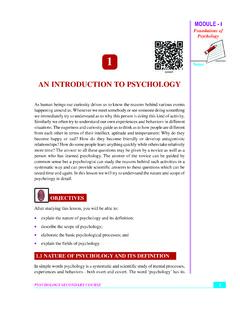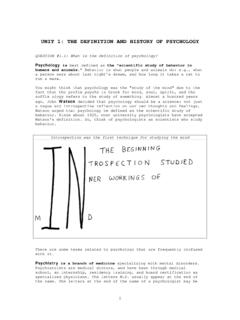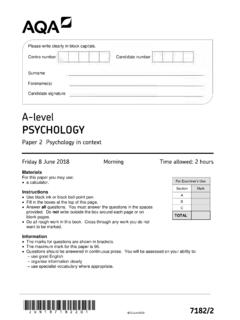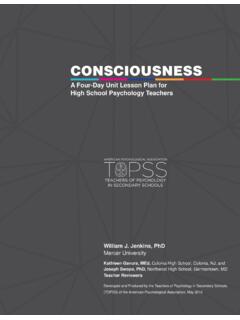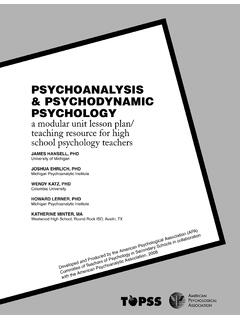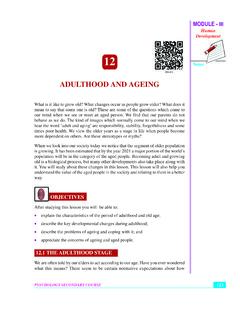Transcription of Overcoming Language and Cultural Barriers in School 1 ...
1 Overcoming Language and Cultural Barriers in School 1 Title Page Overcoming Language and Cultural Barriers in School : Helping Hispanic Students Acquire Success in Elementary School Pauline S. Ivey Submitted in Partial Fulfillment of the Requirements for the Degree Master of Science in Education School of Education and Counseling Psychology Dominican University of California San Rafael, CA May 2011 Overcoming Language and Cultural Barriers in School 2 Acknowledgements Thanks to Dr. Madalienne Peters and Dr. Sarah Zykanov for their assistance with my research, as well as continuously sharing a kind word to keep my spirits lifted. A special thank you to my parents who have been with me every step of the way through this wonderful journey; always listening, offering unconditional love, answering the phone at all hours of the day and night, providing me with amazing support from afar and encouraging me to dream big.
2 Thank you for reminding me that I can achieve anything that I put my heart to. My older brother, a man of incredible character, provided me with amazing perspective balanced with endless hours of humor; always at the right time. Thank you for the mix CDs that kept me motivated at every bend in the road. Thank you to my dear grandmother, Alice, for sharing your love of educating all children, especially the more challenging. You will forever be in my heart. Thank you to Jane Moscoso, for whom I am forever indebted to for furthering my love of educating children, and to Rosa Romero, teaching partner in North Carolina, you furthered my desire to reach out to the Hispanic community to connect parents to School . Thank you Sharon Boschen, Jennifer Bylund, and Charles Ivey, three principals for whom I have had the pleasure of working under.
3 You always believed in my capabilities as a teacher and colleague. And finally, thank you to the 250+ children that I have had the pleasure of teaching. Your delight in learning continues to inspire me. Overcoming Language and Cultural Barriers in School 3 Table of Contents TITLE PAGE .. 1 ACKNOWLEDGEMENTS .. 2 TABLE OF CONTENTS .. 3 ABSTRACT .. 4 CHAPTER 1 .. 5 INTRODUCTION .. 5 STATEMENT OF PROBLEM .. 6 PURPOSE STATEMENT .. 7 RESEARCH QUESTIONS .. 7 THEORETICAL RATIONALE .. 7 ASSUMPTIONS .. 8 BACKGROUND AND NEED .. 8 CHAPTER 2 REVIEW OF THE LITERATURE .. 10 INTRODUCTION .. 10 HISTORICAL CONTEXT .. 10 REVIEW OF THE PREVIOUS LITERATURE .. 12 Teaching Approach .. 12 American Attitude towards Educating Second Language Students.
4 18 Cultural Connection to Hispanic Education .. 20 STATISTICS .. 22 SPECIAL COLLECTIONS .. 27 INTERVIEW WITH AN EXPERT .. 28 CHAPTER 3 METHOD .. 32 SAMPLE AND SITE .. 32 ACCESS AND PERMISSIONS .. 32 DATA GATHERING STRATEGIES .. 33 DATA ANALYSIS APPROACH .. 34 ETHICAL STANDARDS .. 34 CHAPTER 4 FINDINGS .. 35 DESCRIPTION OF SITE, INDIVIDUALS, DATA .. 35 ANALYSIS OF THEMES .. 35 CHAPTER 5 DISCUSSION .. 37 HOW PRESENT STUDY COMPARES TO PREVIOUS RESEARCH .. 37 SUMMARY OF MAJOR FINDINGS .. 37 LIMITATIONS/GAPS IN THE LITERATURE .. 39 IMPLICATIONS FOR FUTURE RESEARCH .. 40 OVERALL SIGNIFICANCE OF THE LITERATURE .. 40 A PROPOSED MODEL .. 42 REFERENCES .. 44 Overcoming Language and Cultural Barriers in School 4 Abstract Research shows that Hispanic second Language students are not as successful as their English-speaking peers in School .
5 The problem is in part due to several factors: curriculum deliverance in a foreign Language , Cultural differences, and family/ School disconnect. Current census reports reveal that Hispanic populations in the United States, and therefore within public schools, are on the rise. With the passing of the 2002 Elementary and Secondary Education Act, also known as No Child Left Behind, mainstream classroom curriculum instruction is now primarily taught in English. Without honoring the many languages and cultures that California students bring to the classroom, the disconnect between School and home deepens. This study followed qualitative design research using the interview format to research ways to more fully integrate Hispanic students and their families into the public School system.
6 Teachers and administrators served as participants in data collection. Results indicated that honoring Hispanic culture within the curriculum and broadening the definition of parent participation, Hispanic students and families feel more connected to the educational process. Overcoming Language and Cultural Barriers in School 5 Chapter 1 Introduction Each fall, millions of children enter our elementary schools across the United States with the desire to learn and broaden their educational horizons. For many children, educational gains are further enhanced through support received from home. Parents provide necessary scaffolding to increase academic gains in the areas of reading, math, science, and even friendship.
7 But for some students, Language and culture become Barriers for the level of support offered by their family. Students with parents whom are active within the School community experience a greater degree of educational support, which often translates into School success. Unfortunately, the opposite is true as well. While teaching elementary School in Sonoma County, I worked with a colleague that personally took it upon herself to reach out to each Hispanic family, respond to their personal family needs, and in essence draw them into the School system. She spent countless hours of her own time reaching out, ensuring family/ School connectivity and ultimately, student success. Upon moving to the east coast, I discovered that many Hispanic families desired to be a part of their child s education, but felt a certain level of disconnect from the School system.
8 Participation greatly increased when meetings were translated into Spanish, but this wasn t possible all the time. After many conversations with a colleague, it was decided that something must be done, even if it was on a small scale. A little research uncovered a local community support agency that offered assistance on many different levels. For some families, they provided support through a library check-out Overcoming Language and Cultural Barriers in School 6 system which included educational games, toys, and books. For other families, they provided help locating healthcare through low cost medical clinics. Additionally, English classes were also offered many times throughout the year. After careful planning with this agency and my esteemed colleague, I enthusiastically opened the doors of my classroom after School hours one evening, to reach out to these families.
9 During this evening, a general overview of the School year was presented, including specific dates and curricular expectations. As well, a basic reading lesson was modeled and translated to demonstrate the manner in which the students were being taught. And finally, parents were encouraged to ask questions regarding their own specific needs: help with homework, educational supplies, English classes, healthcare, etc. The results were amazing; standing room only in my classroom. For years to come, those families came back to me when they were in need. I was touched by their willingness to reach out for help and moved to start thinking about how we could continue this kind of support. How could we expand this support to an even greater level? How could we reach out to families that want to support their child, but are limited in their own abilities due to Language and Cultural Barriers ?
10 Statement of Problem Hispanic families within the American School system are not fully participating in their child s education due to Language and Cultural Barriers , and therefore missing out on the opportunity to help their child succeed. When their English-speaking counterparts incur difficulties, their parents are knowledgeable about the system and are therefore able to help their child work through the challenge; neither Language nor culture is an inhibiting Overcoming Language and Cultural Barriers in School 7 factor. Many Hispanic families are at a disadvantage and often must rely on the goodness of the system to come to their defense. Purpose Statement The purpose of this study is to research ways to more completely integrate Hispanic families into the School system with the hope of increasing student academic success.










